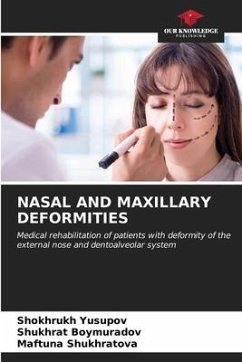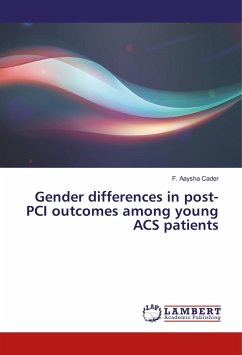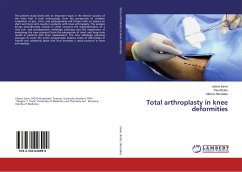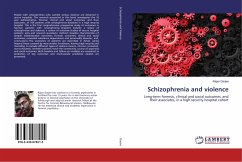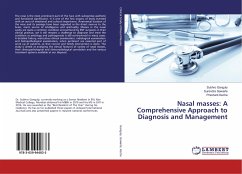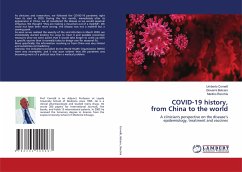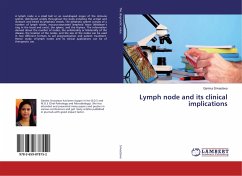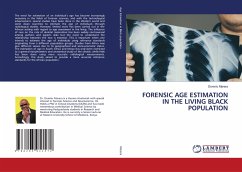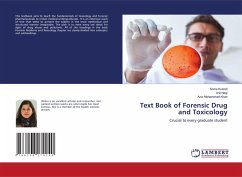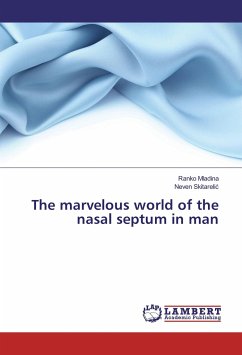
The marvelous world of the nasal septum in man
Versandkostenfrei!
Versandfertig in 6-10 Tagen
24,99 €
inkl. MwSt.

PAYBACK Punkte
12 °P sammeln!
Since the beginning of rhinosurgery of the 19-th century it has been well known that the nasal septum very rarely has an absolutely straight shape. Nasal septum in man usually appears in one of the well defined six types of the deformities. The combination of them can be seen forming the type 7. Two out of the six types (type 5 and 6) are absolutely inherited and have nothing to do with the trauma against the nose. Besides, since the incidence of types 5 and 6 is enormously high in patients who survived an Acute Coronary Syndrome (ACS) and afterwards showed positive coronary angiography, perha...
Since the beginning of rhinosurgery of the 19-th century it has been well known that the nasal septum very rarely has an absolutely straight shape. Nasal septum in man usually appears in one of the well defined six types of the deformities. The combination of them can be seen forming the type 7. Two out of the six types (type 5 and 6) are absolutely inherited and have nothing to do with the trauma against the nose. Besides, since the incidence of types 5 and 6 is enormously high in patients who survived an Acute Coronary Syndrome (ACS) and afterwards showed positive coronary angiography, perhaps there exists a common gene for the onset of the type 5 or type 6 and strong predilection for the ACS. Type 3 was found to be present in more than 90% of patients suffering from chronic rhinosinusitis. Type 2 is the main factor of the malfunction of the naso-thoracal reflex in man and could influence a predilection to the inflammatory diseases of the lower respiratory system. The book should help shed some light on this new and exciting knowledge about the nasal septum and should be especially useful to ENT specialists, forensic medicine experts and molecular biologists.



